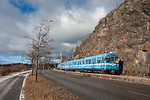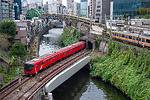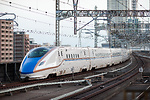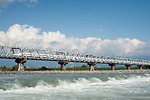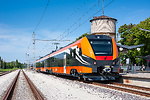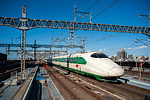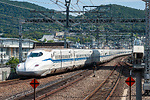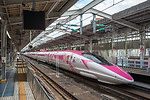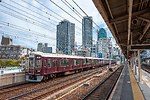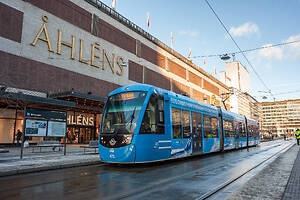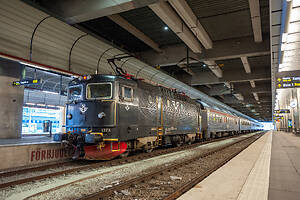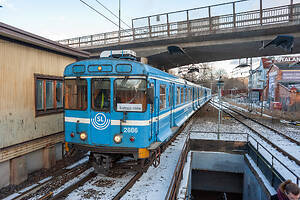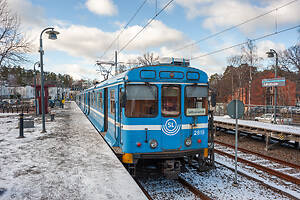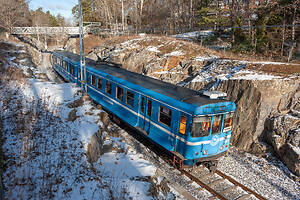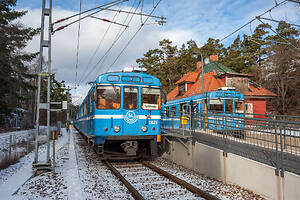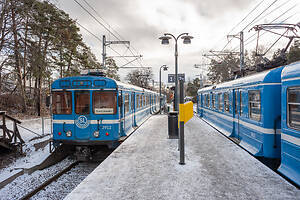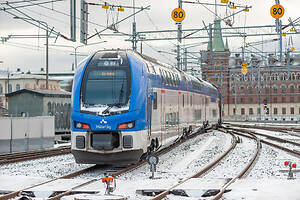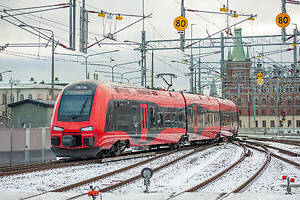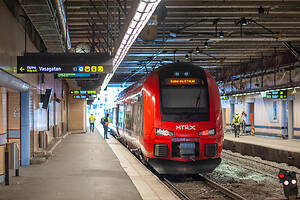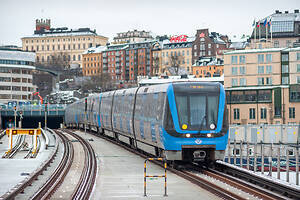Nice!
Today morning at around 11:30, two Shinkansen bullet trains running between Ueno and Omiya stations in Tokyo became separated while travelling at about 60 km/h. Trains involved in the incident were Hayabusa and Komachi H5+E6 set. Services on Tohoku Shinkansen were disrupted for about three hours as a result. However, there was similar incident in September of last year, when E5+E6 trains decoupled while travelling at high speed. Because of those incidents, JR East announced it will suspend all coupled Shinkansen operations until the cause is identified. Incidents like these are rare on Japanese high-speed railways and are taken very seriously and investigated thoroughly.
Spårväg City (tram line 7) at central Stockholm
SJ regional 127 Stockholm to Västerås
Line 25 train arriving to temporary end station at Saltsjö-Järla
Saltsjöbanan is a normal-gauge (1435mm) commuter railway at Stockholm, Sweden. It connects Saltsjöbaden region with central Stockholm via Slussen, however it's not connected to the rest of Swedish rail network, despite the fact that both share the same gauge. Rolling stock used on Saltsjöbanan are ASEA-made EMU's that were originally intended to be used on Stockholm metro (tunnelbana), but were modified for above ground commuter line usage. These modifications include pantograph current collection instead of a shoe, removal of middle door on each wagon, floor extension for easier boarding, additional headlight etc.
On this picture you can see Saltsjöbanan train on line 25 at it's final station Saltsjöbaden, before heading back to Saltsjö-Järla. From there, replacement buses will take passengers to Slussen. Due to construction works, railway between Saltsjö-Järla and Slussen is closed and will not be reopened until 2028. By that time, Saltsjöbanan will also receive new trains.
On this picture you can see Saltsjöbanan train on line 25 at it's final station Saltsjöbaden, before heading back to Saltsjö-Järla. From there, replacement buses will take passengers to Slussen. Due to construction works, railway between Saltsjö-Järla and Slussen is closed and will not be reopened until 2028. By that time, Saltsjöbanan will also receive new trains.
Saltsjöbanan train on line 25 Saltsjöbaden to Saltsjö-Järla
Saltsjöbanan train on line 25 Saltsjöbaden to Saltsjö-Järla
Saltsjöbanan commuter train on line 26 Solsidan to Igelboda
Saltsjöbanan commuter trains on line 26 and 25
Saltsjöbanan commuter railway
Stadler Dosto (Kiss) regional train operated by Mälartåg
Stockholm to Gothenburg fast service operated by VR
VR (former MTRX) fast service Gothenburg to Stockholm
Stockholm metro (tunnelbana) green line train




